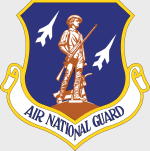Hobby Master HA3107 USAF Convair F-102A Delta Dagger Interceptor - 146th Fighter Interceptor Squadron, 112th Fighter Interceptor Group, Greater Pittsburgh IAP, 1975 (1:72 Scale)
"The Ultimate Interceptor"
- DoD reference to the newly developed production version of the F-102 Delta Dagger
 The Convair F-102 Delta Dagger is an interceptor aircraft designed and produced by the American aircraft manufacturer Convair. A member of the Century Series, the F-102 was the first operational supersonic interceptor and delta-wing fighter operated by the United States Air Force (USAF).
The Convair F-102 Delta Dagger is an interceptor aircraft designed and produced by the American aircraft manufacturer Convair. A member of the Century Series, the F-102 was the first operational supersonic interceptor and delta-wing fighter operated by the United States Air Force (USAF).
The F-102 was designed in response to a requirement, known as the 1954 Ultimate Interceptor, produced by USAF officials during the late 1940s. Its main purpose was to be the backbone of American air defenses and to intercept approaching Soviet strategic bomber fleets (primarily the Tupolev Tu-95) during the Cold War. The aircraft was designed alongside a sophisticated fire-control system (FCS); however, a simplified unit had to be adopted due to development difficulties. It used an internal weapons bay to carry both guided missiles and rockets. On October 23rd, 1953, the prototype YF-102 performed its maiden flight; however, it was destroyed in an accident only nine days later. The second prototype allowed flight testing to resume three months later, but results were disappointing: as originally designed, the aircraft could not achieve Mach 1 supersonic flight.
To improve its performance prior to quantity production commencing, the F-102 was redesigned, its fuselage was reshaped in accordance with the area rule while a thinner and wider wing was also adopted. Flight testing demonstrated sufficient performance improvements for the USAF to be persuaded to permit its production; a new production contract was signed during March 1954. Following its entry to USAF service in 1956, the F-102 promptly replaced various subsonic fighter types, such as the Northrop F-89 Scorpion, in the interceptor role. The F-102C tactical attack model, equipped with several improvements, including a more powerful engine and Gatling gun, was proposed but not ultimately pursued. A total of 1,000 F-102s were built, both for the USAF and a handful of export customers, including the Hellenic Air Force and the Turkish Air Force.
By the 1960s, USAF F-102s had participated in a limited capacity in the Vietnam War as a bomber escort and even in the ground-attack role. The aircraft was supplemented by McDonnell F-101 Voodoos and, later on, by McDonnell Douglas F-4 Phantom IIs. Over time, many F-102s were retrofitted with infrared search/tracking systems, radar warning receivers, transponders, backup artificial horizons, and modified fire-control systems. Throughout the mid-to-late 1960s, many USAF F-102s were transferred from the active duty Air Force to the Air National Guard, and, with the exception of those examples converted to unmanned QF-102 Full Scale Aerial Target (FSAT) drones, the type was totally retired from operational service in 1976. Its principal successor in the interceptor role was the Mach 2-capable Convair F-106 Delta Dart, which was an extensive redesign of the F-102.
Pictured here is a 1:72 scale rendition of a USAF Convair F-102A Delta Dagger interceptor that was attached to the 146th Fighter Interceptor Squadron, 112th Fighter Interceptor Group, then deployed to the Greater Pittsburgh IAP during 1975.
Sold Out!
Dimensions:
Wingspan: 6-1/4-inches
Length: 11-1/4-inches
Release Date: December 2012
 Historical Account: "Always Ready, Always There" - The Pennsylvania Air National Guard is the air force militia of the U.S. state of Pennsylvania. It is, along with the Pennsylvania Army National Guard, an element of the Pennsylvania National Guard. It is considered a part of the United States Air Force, as well as of the state.
Historical Account: "Always Ready, Always There" - The Pennsylvania Air National Guard is the air force militia of the U.S. state of Pennsylvania. It is, along with the Pennsylvania Army National Guard, an element of the Pennsylvania National Guard. It is considered a part of the United States Air Force, as well as of the state.
The Pennsylvania Air National Guard was formally established in 1947. During the Vietnam War, the PA Air Guard flew 134 supply missions to Vietnam in 1966-1967, becoming the first reserve air force ever to enter a combat zone without actually being mobilized.
In 1972, widespread flooding in the aftermath of Hurricane Agnes resulted in 45 deaths and $3 billion in property damage. Nearly 13,000 Army and Air Guard members were called to state active duty to help with relief operations.
Several Air Guard units from Pennsylvania were mobilized in 1990-1991 for duty in Southwest Asia during Operation Desert Shield and Operation Desert Storm. Every member returned home safely.


